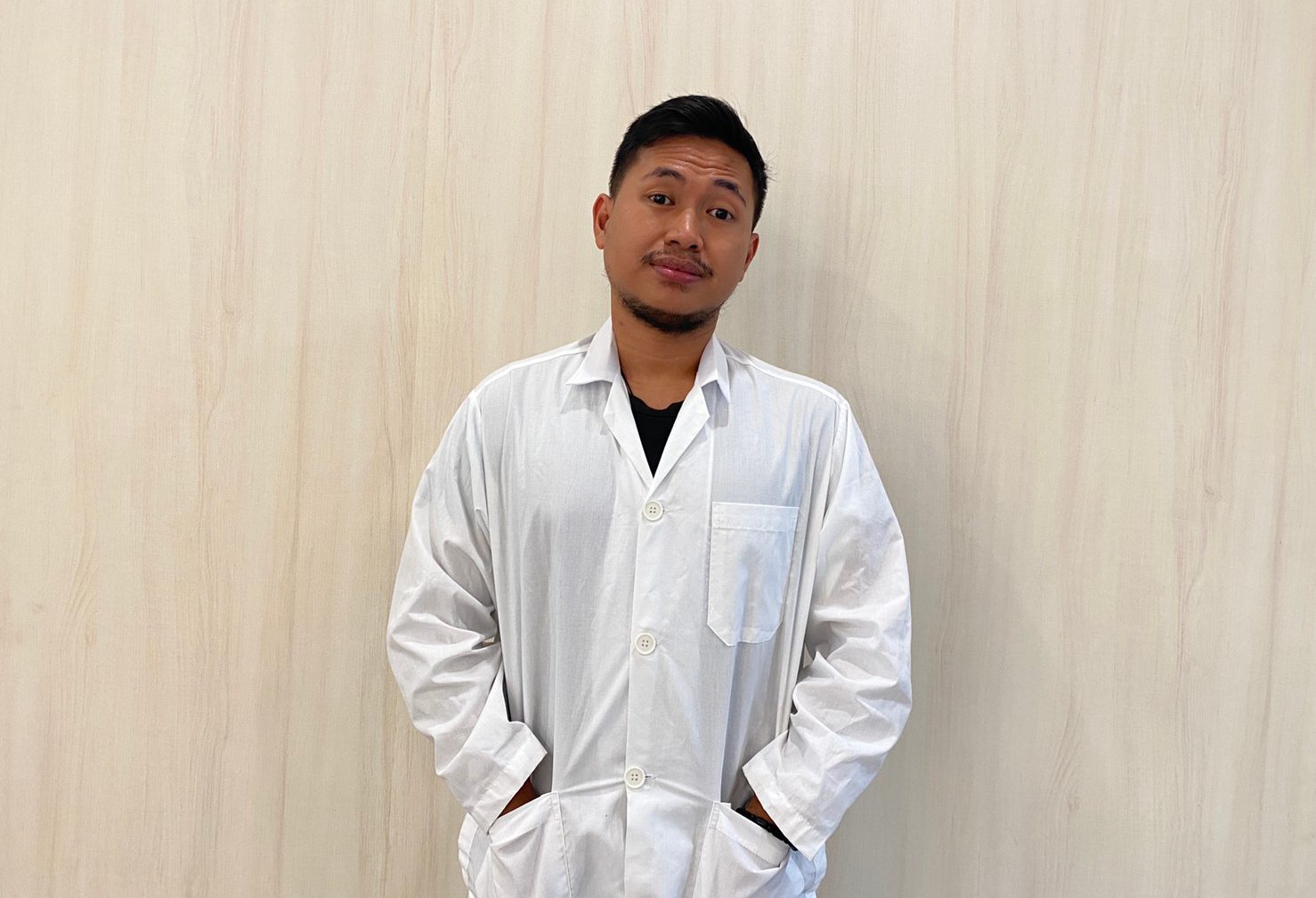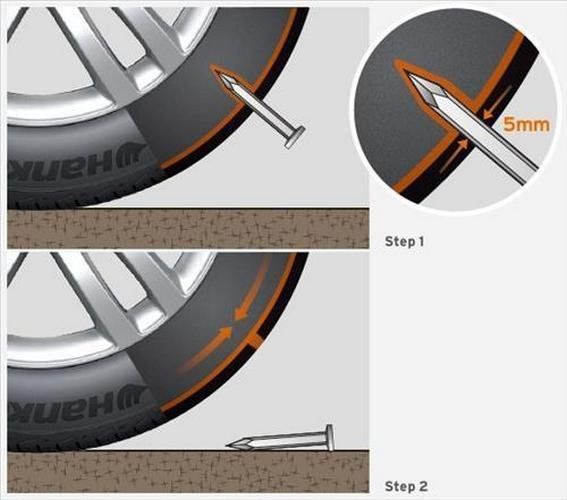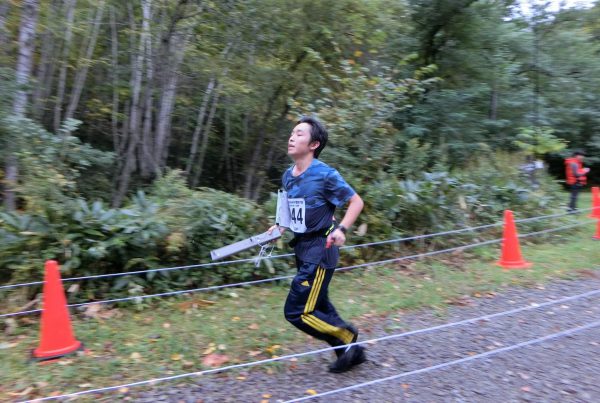Imagine driving a car and getting your tire punctured unexpectedly. It certainly is a hassle for you to get this fixed and replaced but more so for the environment, where these get dumped or stockpiled on a regular basis.
In an article released on the National Geographic online titled ‘Tires: The plastic polluter you never thought about,’ it is said that 10 percent of overall microplastic waste in the world’s oceans can be attributed to modern tires consisting of synthetic rubber, plastic-based fabric, and other materials.
This environmental issue motivated Samsul Bhakri to pursue his Master’s Degree at the Department of Materials Science and Technology at the Nagaoka University of Technology (NUT). His vision – to uncover ground-breaking results that will extend the use of self-healing materials and properties to rubber and to discover the manner by which rubber can be recycled effortlessly.
“Polymer science is a specialized field of materials science associated with the chemical field. Polymers play a big part in our daily lives. They are in car tire, plastic bags, drinking cups, Teflon-coated cookware, foam cushion, synthetic clothing etc. Right now, my specialization is in polymers that make up rubber – either natural rubber or synthetic rubber especially Brominated butyl rubber (B-IIR).”
“At NUT, my research focuses on modifying the molecular structure of rubber to maximize its properties. Insipred by nature, I look at different composite materials in conventional rubber that can be used so they can have autonomous self-healing and recyclable feature,” he said, explaining the goal of his research.
“Rubber is not a biodegradable material. Tires that do not get fixed or recycled usually end up in landfill, and cannot degrade by itself. We keep on taking out resources to manufacture rubber, use them, but not reuse them, and if we continue this cycle, it will not be sustainable in the long run since resources get depleted gradually.”
Millions of tires are discarded in landfills every year. Image Source: Royal Auto
He adds: “Engineering self-healing and recyclable properties are hard for dry materials like rubber because of the polymers or very large molecules that make them up. These large molecules have repeating sub-units and are connected by a robust irreversible chemical cross-linking aka covalent bonds, making the rubber the tough and elastic material. Once these bonds break or crack, they do not reconnect, or reassembled. Consequently, it will lose its versatility.”
“Reuniting them together, by itself, and without the application of heat or any other treatment, is the goal to make self-healing rubber possible. When a car tire, for example, gets punctured, it can be recovered through self-healing and as a result, we are able to use it continuously. Additionally, finding the technique to fabricate a rubber product that ultimately can be recycled without degrading its exceptional properties makes the research arduous, challenging, and exciting.”
His love for research
Prior to pursuing his research on synthetic rubber at NUT, Samsul spent over a year researching about modifying natural rubber molecular structure at the Department of Materials Science at Chulalongkorn University in Bangkok, Thailand, and about bioplastics at the Research Center for Chemistry, Indonesian Institute of Sciences (LIPI) in Indonesia where he spent three years as a research assistant of the polymer research group.
“These experiences taught me that there are so many unknowns in research, and even with known phenomena, there’s still more to discover and explain. That’s what makes the field exciting, as there is always something new to discover. And most interestingly, in a research project, whenever we could uncover a novel thing it will guide us to uncover more.”
His passion for design
Outside of his research laboratory, Samsul also spends time pursuing leisure and recreational activities which are sources of inspiration for him. “Since I was in Senior High School, I really enjoyed design. Whether itsposters, brochures, logos, infographics, etc., whenever my friends ask me to create a design and I have much leisure time, I will execute it gladly.”
“Recently, I participated in a logo competition organized by Environment Development and Sustainability program at Chulalongkorn University, and I won first place; thus, my logo was determined as the program’s logo in the near future.”
“I also bring this aspect to my research activities. In fact, in 2017, I showcased a project’s findings through a poster presentation aiming to highlight the benefits of poly (lactic acid) to those who are working in natural resource-based technology. The project was gratuitously awarded as the best poster in the ‘International Symposium on Applied Chemistry’. It reminded me that whatever you desire to do, as long as the passion is involved, it will reward you.”
Samsul shares his life experiences in Bangkok which include visits to some temples, the Erawan Falls-Kanchanaburi, and Thipsamai restaurant which is one of the famous cuisine restaurants in Thailand.
His vision for the future
In the years to come, Samsul is determined to contribute in solving waste management problems through his research.
“A number of products made up of polymer have resulted to waste management problems such as single-use plastics or punctured tires. Whether or not they are properly disposed, the fact is, most of them are made of petroleum which is not good, in a sense that, the resources you will need are not renewable. More so, if the plastic is made from petroleum, they cannot degrade by itself in the ground as the microorganism could not recognize those chemical structure, so my main goal is to find what kind of materials is suitable to substitute to petroleum. And hopefully, that type of research can help bring in positive change.”
With his knowledge of polymer science, natural rubber, and now, synthetic rubber, Samsul is ready to put these together to create what matters the most to him. “Ultimately, after earning a double degree in CU and NUT, I intend to be a specialist in developing a more sustainable polymer science by using a new method with a more suitable approach, and most importantly, I want to be a researcher who contributes to the world especially for my country to create a sustainable way of life,” he concludes.
Main image source: Thomas Millot on Unsplash













